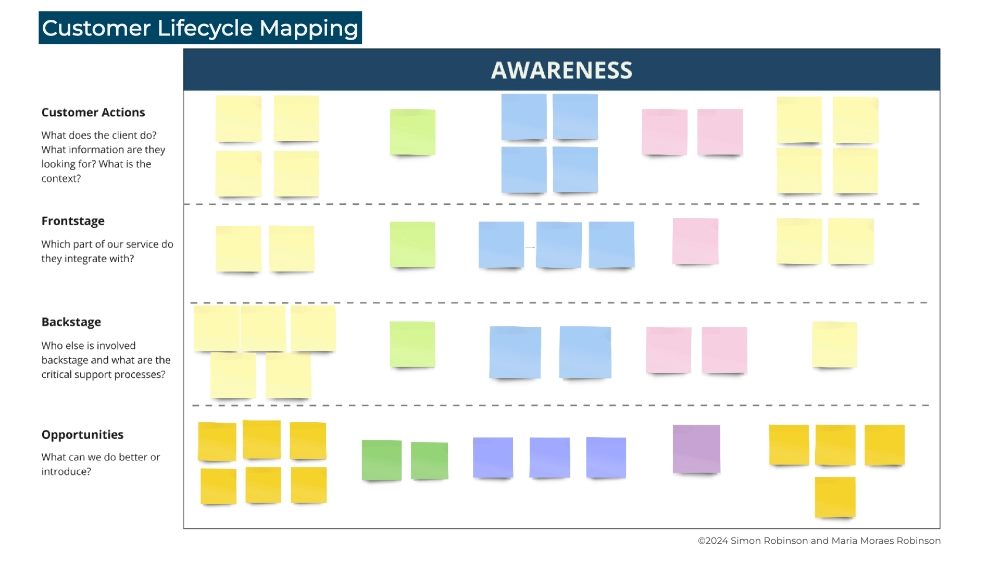The Gist
-
Customer lifecycle integration. Align the customer lifecycle with organizational strategy to guarantee a cohesive approach across all functions.
-
Value stream alignment. Define value streams using the customer lifecycle to guide digital transformation and improve efficiency while prioritizing customer experience.
-
Agile strategy approach. Use the customer lifecycle to map strategic success factors. Blend short-term and long-term goals while maintaining flexibility in service design.
In a recent CMSWire article, Serena Chan called for the democratization of customer centricity by empowering every team to contribute to customer experience. She said, “To deliver a great, cohesive experience, democratizing customer centricity is essential, as ecommerce and logistics teams need to be aligned around the same goal.”
I agree entirely. To achieve this, senior leadership teams need to engage every person and function in their organizations around customer experience and make sure that customer centricity is a core pillar of their strategic initiatives.
Here are four ways to achieve this level of strategic customer centricity by using the customer lifecycle as a key tool.
Understand the Customer Lifecycle to Drive Strategy
Most people are familiar with the customer lifecycle, but how closely does it align with the customer journey? When working with the customer lifecycle strategically, it should be treated as a sense-making tool that informs the design of business processes and segmented customer journeys.

An example of how this can be done in practice is through the customer lifecycle canvas. This canvas is particularly useful in the very early stages of defining new products and services. It can be used to facilitate workshops that involve representatives across the whole organization. Not only will new ideas emerge, but those responsible for the new products and services can gain buy-in from those whose current business processes will be impacted.
The other key element of this canvas is the value proposition. In many organizations, few people can easily explain how their business delivers value to customers. If the value proposition is clearly defined, it can be included here to help inform people. If not, involving the same group in developing a new value proposition can generate even deeper insights during the canvas process.
Identify Value Streams for Better Outcomes
A value stream is a way to define and categorize all the activities that collectively deliver a product or service to a customer. The concept has tended to remain within the context of lean management, but it’s also important in defining the end goal for both users and customers of digital transformation projects. Many digital transformation projects miss deadlines or exceed budgets because they prioritize technology over the benefits to end users and the intended customer experience.
The use of the customer lifecycle canvas in conjunction with developing key persons and voice of the customer definitions can help define both new value streams and end-to-end business processes that support them.
Map Critical Success Factors
Traditional customer experience methodologies often start with customer journey mapping, overlooking the customer lifecycle, before moving to service blueprinting and business process design. While this is a valid way to design and implement customer experiences, it doesn’t consider the strategic drivers of the organization.
An organization’s strategic drivers are the key factors that shape its overall direction and decision-making processes. Once the drivers are identified, they become the basis for formulating and executing the organization's plan, which helps align actions and resources with the overarching strategic goals.
An important intermediate step that falls between customer lifecycle mapping and service design is defining critical success factors, along with the areas and functions involved.

Defining customer lifecycle critical success factors is a two-step process. First, the customer lifecycle is mapped in workshops with broad representation from across functions. Then, the group works together to identify critical success factors based on the organization’s strategic drivers.
This exercise is a powerful way to communicate the organization’s strategy in a way that aligns all functions and teams. It also allows senior leadership teams to identify critical factors in advance by gathering bottom-up feedback before developing new business processes.
Related Article: How AI is Shaping the Future of Customer Experience Journey Mapping
Refine the Customer Lifecycle Before Creating Service Blueprints
Customer experience professionals rarely have the chance to develop customer-centric strategic programs from scratch. Product teams and marketing departments are almost always in a cycle of continual improvement. For this reason, leaders need to adopt agile strategy methodologies that balance short, medium and long-term goals simultaneously.

In this context, an extended version of the customer lifecycle can be applied and organized into four key categories at each stage.
-
Customer actions: What does the client do? What information are they looking for? What is the context of each action?
-
Frontstage: Which part of our service do these customer actions integrate with?
-
Backstage: Who else is involved backstage, and what are the critical support processes?
-
Opportunities: What can we do better or introduce?
These questions are used to map out each stage of the customer lifecycle on separate canvases. Just as with the other examples, the trick here is not to treat this as a product or service development activity, but as a strategic activity involving a wide range of representatives from all functions in the organization.
Representatives will offer many ideas and observations, which then need to be clustered into meaningful categories. The strategic power of these conversations lies in the ability to uncover systemic issues that arise across complex business processes. These are issues that any single department may not be able to diagnose and improve alone. Once there is a broad level of acceptance for the need to implement improved business processes, the service blueprint can begin with a richer array of meaningful, real-world inputs.
Use the Customer Lifecycle to Align Teams and Strategy
Achieving true customer centricity requires more than just a focus on customer journeys or digital transformation initiatives. By integrating the customer lifecycle into their overall strategy, organizations can align their strategic drivers with the day-to-day operations of every function, break down silos and align teams. The customer lifecycle provides a powerful tool to make sure that every team contributes to a cohesive, customer-centric strategy, particularly for those businesses operating in complex and evolving markets.
Core Questions Around Creating a Customer Lifecycle Strategy
Editor's note: Here are two important questions to ask about these customer lifecycle strategies.
How can the customer lifecycle improve customer experience strategies?
It offers a framework for organizations to align all teams with a customer-centric approach. By mapping the lifecycle and integrating it into strategic initiatives, companies can make sure every function works together to improve the customer experience. This comprehensive view helps teams identify gaps, streamline processes and create value at each stage of the customer journey.
Why should businesses use the customer lifecycle to define value streams?
This guarantees that all business activities are aligned with customer needs. It helps companies identify key activities that contribute to delivering value to customers while supporting digital transformation efforts. By focusing on value streams, businesses can improve efficiency and make sure their processes are directly connected to customer outcomes.
Learn how you can join our contributor community.
